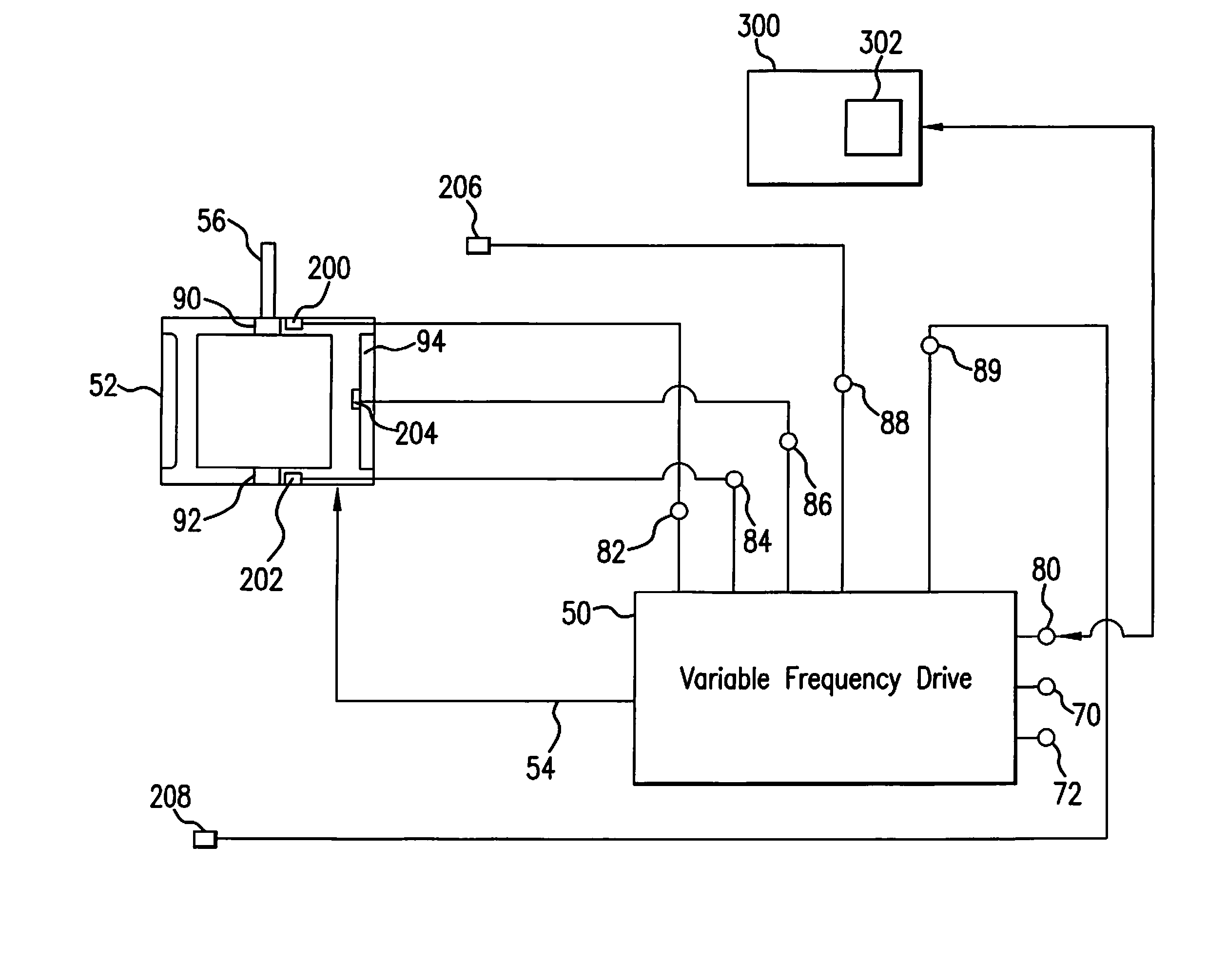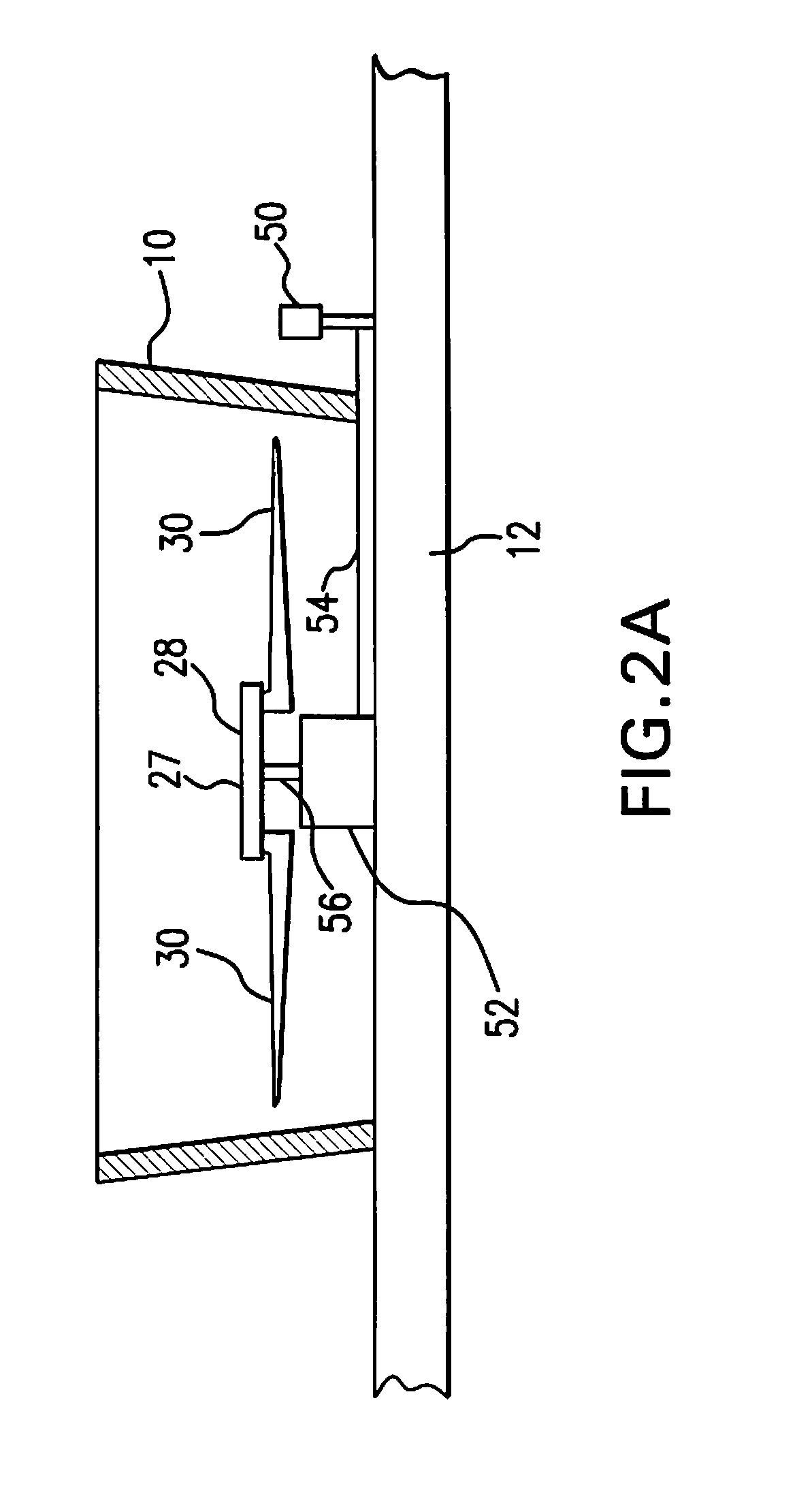Integrated Fan Drive System For Cooling Tower
a technology of integrated fan drive and cooling tower, which is applied in the direction of trickle cooler, field or armature current control, combustion air/fuel air treatment, etc., can solve the problems of unstable and dangerous operating conditions, immediate shut down of processing units, and petroleum refining cannot take place without cooling towers
- Summary
- Abstract
- Description
- Claims
- Application Information
AI Technical Summary
Benefits of technology
Problems solved by technology
Method used
Image
Examples
Embodiment Construction
[0022]Referring to FIG. 1, there is shown a prior art mechanical fan drive system, and a portion of a wet cooling tower. The remaining portion of the wet cooling tower is not shown since the structure and operation of cooling towers is well known in the art. Fan cylinder or plenum 10 is positioned upon fan deck 12 of the cooling tower. The prior art mechanical fan drive system comprises an induction motor 14, drive shaft 16, couplings 18 and 20, and right-angle gearbox 22. Motor 14 is seated upon and / or secured to fan deck 12. Gearbox or gear reducer 22 is mounted to or supported by fan deck 12. Gearbox 22 has a vertical shaft 24 that rotates upon rotation of drive shaft 16. As shown in FIG. 1, fan 27 is located within fan cylinder 10 and comprises hub 28 and fan blades 30 that are attached to hub 28. Vertical shaft 24 is connected to fan hub 28. Thus, rotation of vertical shaft 24 causes rotation of fan hub 28 and fan blades 30.
[0023]Referring to FIG. 2A, there is shown the fan dri...
PUM
| Property | Measurement | Unit |
|---|---|---|
| rotational speed | aaaaa | aaaaa |
| torque | aaaaa | aaaaa |
| speed | aaaaa | aaaaa |
Abstract
Description
Claims
Application Information
 Login to View More
Login to View More - R&D
- Intellectual Property
- Life Sciences
- Materials
- Tech Scout
- Unparalleled Data Quality
- Higher Quality Content
- 60% Fewer Hallucinations
Browse by: Latest US Patents, China's latest patents, Technical Efficacy Thesaurus, Application Domain, Technology Topic, Popular Technical Reports.
© 2025 PatSnap. All rights reserved.Legal|Privacy policy|Modern Slavery Act Transparency Statement|Sitemap|About US| Contact US: help@patsnap.com



